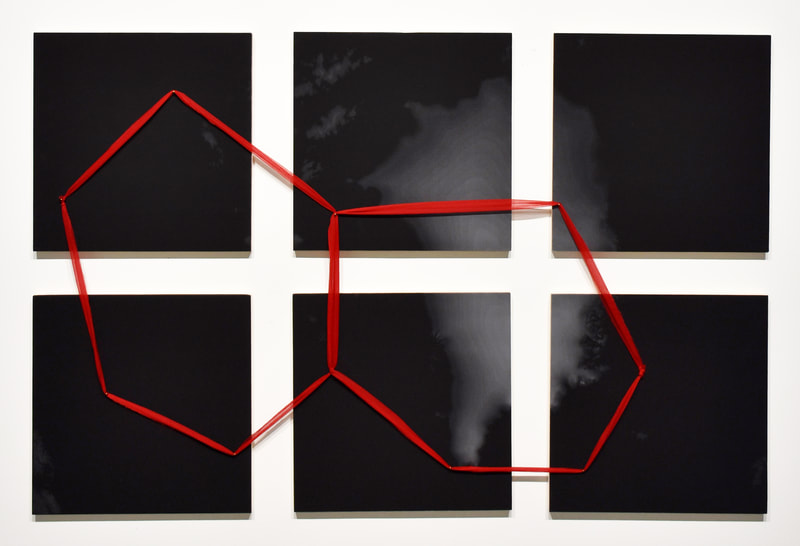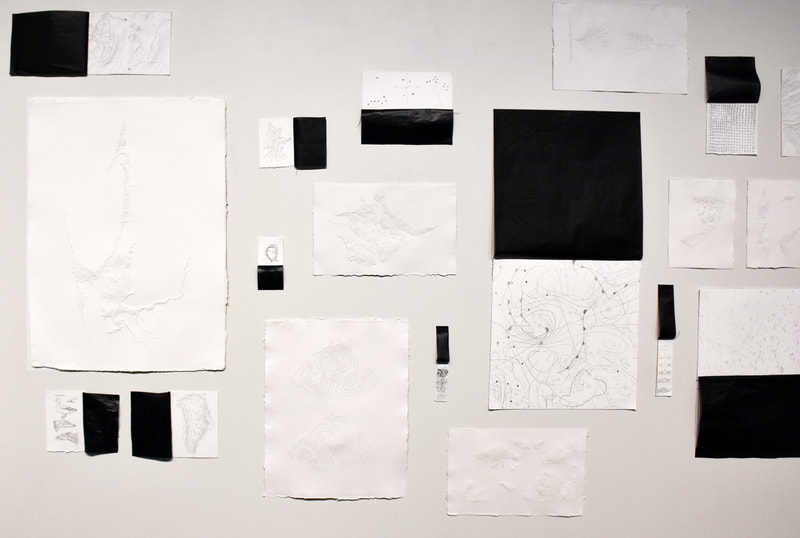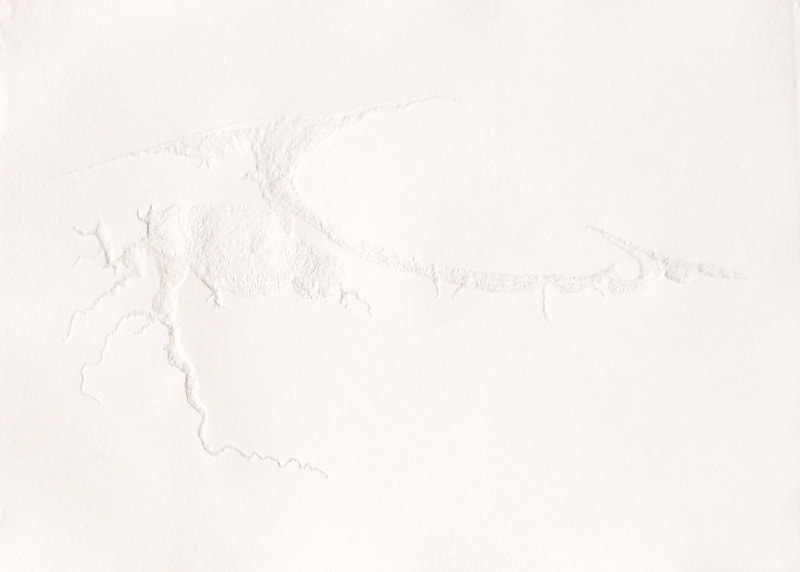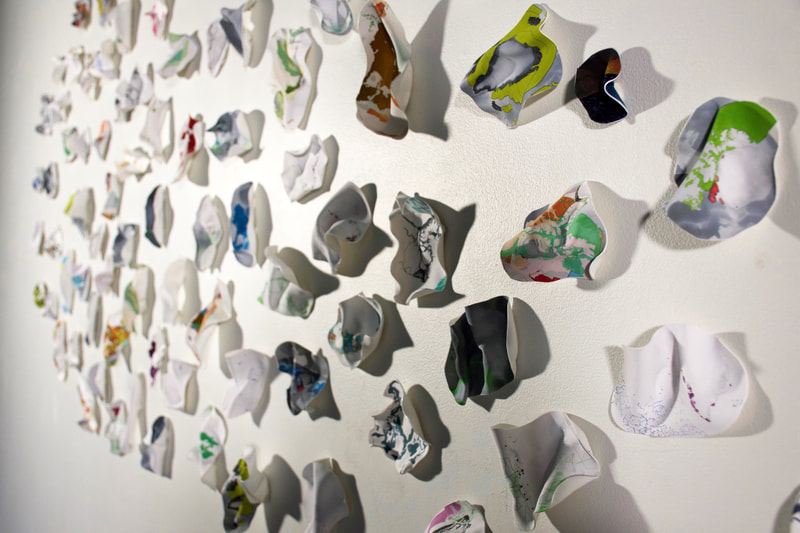A Quick and Tragic Thaw is a series of artworks that explores the impact of a warming world using the arctic region as the symbolic apex. Through the study of scholarly research and data, use of mapping technology and satellite imagery, as well as essays, poems, photographs and illustrations, these artworks interpret the more recent story of human influenced climate change. More broadly, this urgent narration recognizes migration movements of biological forms, toxins, and water and is meant to be a meditation on loss and the fragility of the planet.
These artworks interpret and materialize the research of climate science and contextual literature by juxtaposing specific material with content intended to emphasize connections (and implicit irony) between indisputable data and the conceit of how we chose to live. This work also honors the fact that maps are an art form in and of themselves, that they are literate, and a scientific achievement. Read in one way, they are a narrative of human existence. Read another, they are an accounting of our planetary history and the emergence of the Anthropocene epoch.
The Exhibition Catalog for A Quick and Tragic Thaw features essays by Nancy Campbell and Howard Epstein and was designed by and generously donated by Adrienne DiGiovine, DiGiovine Design, Newtown, PA.
Catalog PDF click here.
A review of the exhibition by Dan Goff can be read here, by Max Patton here, in The University of Virginia Magazine here and in The Polar Journal here.
Click on images below to see multiple views of each art work.
FURTHER NOTES
The artworks in this exhibition were informed by the research of Howard Epstein, PHD, Professor of Environmental Science at The University of Virginia. The exhibition was designed to compliment the conference entitled “Bridging Science, Art, and Community in the New Arctic” sponsored by the National Science Foundation, Navigating the New Arctic program, with additional support from UVA’s Institute for Humanities and Global Cultures, Center for Global Inquiry and Innovation, Environmental Resilience Institute’s Arctic CoLab, and the Arctic Research Consortium of the U.S. (ARCUS).
The map elements were created expressly for this project with arcticDEM and ArcGIS modeling software. Additional research, inspiration, and imagery were culled from Shipmap, NOAA, DEM Explorer and Polar Geospatial Center, MPAS (Land and Ice), Arctic Biodiversity Data Service, NASA Earth Data and Project Ice Bridge, The Nature Conservancy Migrations in Motion, and Esri (Environmental Systems, Research Institute).
FURTHER NOTES
The artworks in this exhibition were informed by the research of Howard Epstein, PHD, Professor of Environmental Science at The University of Virginia. The exhibition was designed to compliment the conference entitled “Bridging Science, Art, and Community in the New Arctic” sponsored by the National Science Foundation, Navigating the New Arctic program, with additional support from UVA’s Institute for Humanities and Global Cultures, Center for Global Inquiry and Innovation, Environmental Resilience Institute’s Arctic CoLab, and the Arctic Research Consortium of the U.S. (ARCUS).
The map elements were created expressly for this project with arcticDEM and ArcGIS modeling software. Additional research, inspiration, and imagery were culled from Shipmap, NOAA, DEM Explorer and Polar Geospatial Center, MPAS (Land and Ice), Arctic Biodiversity Data Service, NASA Earth Data and Project Ice Bridge, The Nature Conservancy Migrations in Motion, and Esri (Environmental Systems, Research Institute).






